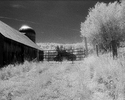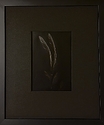I've never encountered this phenomenon before. With a condenser enlarger, no filter (white light) gives me approximately the same contrast print as using a #2 filter, just a shorter print time. With a diffusion enlarger, I use a 2.5 filter to get the same contrast as no filter.
Same here. No filter produces 'normal' contrast, somewhere in the middle of the available grades of the paper.
Going from what I've read so far in this thread, the most likely problem seems to be insufficient development of the print combined with excessive exposure.
@Jezza, which paper do you use? If fiber-based paper such as Ilford Multigrade or any other fiber paper, allow for a development time of 90 seconds to 3 minutes depending on developer dilution.
What is the dilution of your paper developer? If you notice that the print is still developing further when the allotted development time has passed, consider using a stronger dilution to speed things up.
What is the color of the developer concentrate? It should be colorless to pale yellow; if it's amber or even brown, toss it and buy new developer.
As others have suggested:
you develop paper to completion. Make a test strip and keep developing it until there is no more change. Does the entire strip turn black? Give less exposure and try again. Continue until you have a test strip that contains some grey tones (doesn't matter if it looks good, just as long as it's not pure black or white) and note the time it took to develop to this stage. This is your minimum development time. Increase it by some margin (e.g. 50%) to allow for reduced activity of your working stock of developer over the course of the printing session. If the development time is too long to your taste, mix stronger developer to shorten development time.
I generally mix my developer quite strong to get a 45-90 second development time because I'm impatient. Weaker dilutions and (much) longer development times tend to reduce contrast and create warmer tones. I wouldn't aim for this when starting out, but use a quite active dilution for complete development within 1-2 minutes. The instructions on the developer are generally safe to follow, so you don't really have to determine a development time. Just mix according to the instructions and use a development time no shorter than what is indicated on the developer package.
When you have established that your developer is working correctly, make a test strip with increasing levels of exposure. Use a piece of opaque cardboard or whatever to mask parts of the strip as you go along. A good way to dial in to correct exposure is to make strips at one-stop increments. This allows you to span a large exposure range in one strip. E.g. expose bands in one strip for 2, 4, 8, 16 and 32 (and 64, if you're patient enough) seconds. This can easily be done by exposing the full strip for 2 seconds, slide a piece of cardboard/mask on top of the strip so that a narrow band is covered, then expose the remainder of the strip for another 2 seconds (making for 4 seconds total exposure), then slide the cardboard a little further, expose for 4 seconds (makes 2+2+4=8 seconds total), slide the cardboard yet a little further, exposure for 8 seconds (makes 2+2+4+8=16 seconds total exposure), and so forth until you reach the end of your strip.
Develop the strip at your determined development time. Examine the result.
* If you use a fairly large exposure bandwidth (i.e. 6 stops or so, so 2 - 64 seconds), you most likely have bands on your strip that are very pale and have no real shadows but some pure whites, and you will most likely have bands that are very very dark and that include maximum black. You may want to make a few strips until you have one that spans the entire range from very obviously underexposed to very obviously overexposed and that has some pure white as well as some pure black in it. This helps to get a feeling for the range of tones available to you. Note that you best make one strip with very long exposures so that you are absolutely sure that you are seeing some maximum black.
* If you expose the test strip in an area of the image where the deepest shadows are (brightest areas in the projected image under the enlarger), you can determine the exposure time needed to just reach black in the print.
* Conversely, if you expose the strip in an area with the brightest highlights (darkest areas in the projected image), you can determine how much exposure it takes to just reach the slightest possible image tone that borders on pure white (leave a band of the strip unexposed as reference).
* If you place the test strip somewhere in the image where the deepest shadows and brightest highlights are close to each other, you can capture the entire range of tones of the image/negative in one strip. This allows you to estimate if your contrast is appropriate. If you get pure black in the deepest shadows, but the whites are blown out, OR if you get good highlights but too much of the shadow areas turn into pure black, your contrast is too high. Use a filter with a lower grade to reduce contrast. If your highlights are a murky grey and the deepest shadows are still not black, your contrast is too low. Use a higher contrast grade (filter).
* When choosing a new grade, make a test strip to verify that you are where you want to be. Note that different grades may require different exposures, so don't just assume that the exposure time you established earlier will work for a higher or lower grade. It may, or it may not. I personally don't waste paper and (virtually) ALWAYS make a new test strip when I change grade/filter.
Using the above, you can work out the printing grade/filter and exposure time that is needed to get the full range of tones in your negative onto your paper. This is your 'straight print'. Once you've figured out how to consistently get a good straight print, it's time to start thinking about manipulation to get the actual look you want. But practice making straight prints first. I've seen many many fledgling (or re-starting, after a decades-long hiatus) printers start fussing about burning and dodging and whatnot while they're not able yet to get the full range of tones available to them in a single print.
Are the unexposed borders of your paper (or a scrap piece of unexposed paper) pure white after development and fixing? If so, there is most likely no problem with your safe lights. If you want to 'upgrade' your safe lights, consider using red LED bulbs. Most of them are safe with most papers. Red LEDs allow for high light levels that are still safe to the paper, generally making darkroom work easier. Note that 'unsafe' safelights will cause problems with the highlights (no pure whites), but not really with the shadows. So if your problem is also that you're not getting maximum deep black in your print, the safelights are not the cause. They may be an additional problem, but not the entire story.






